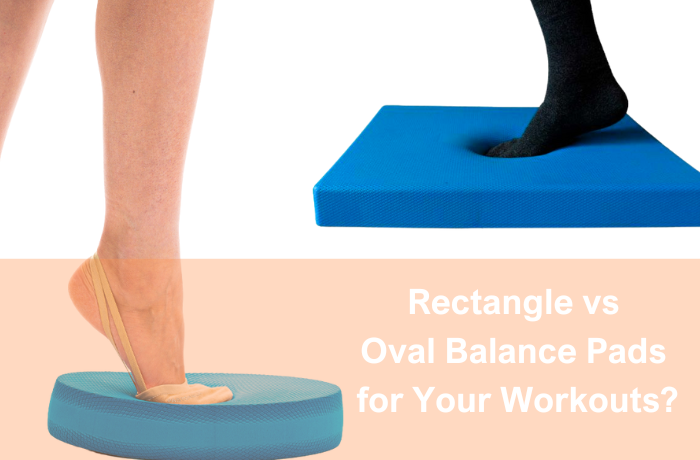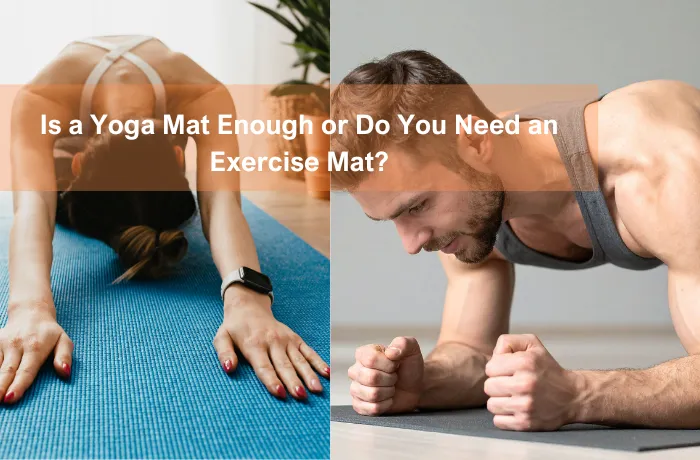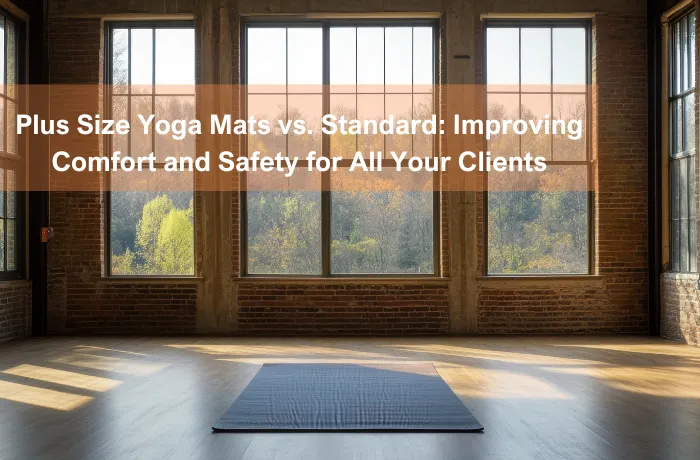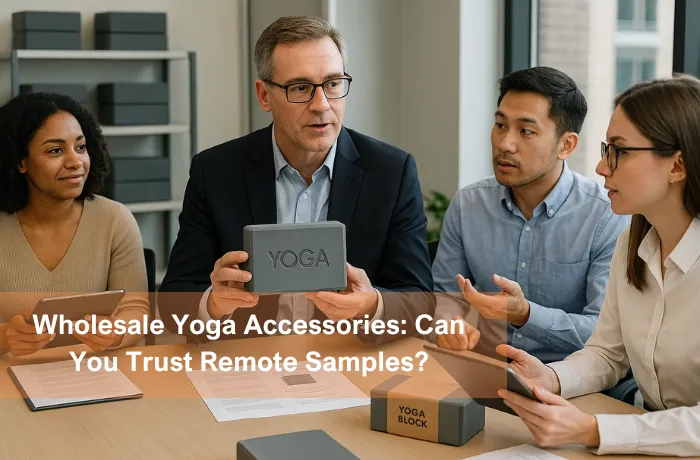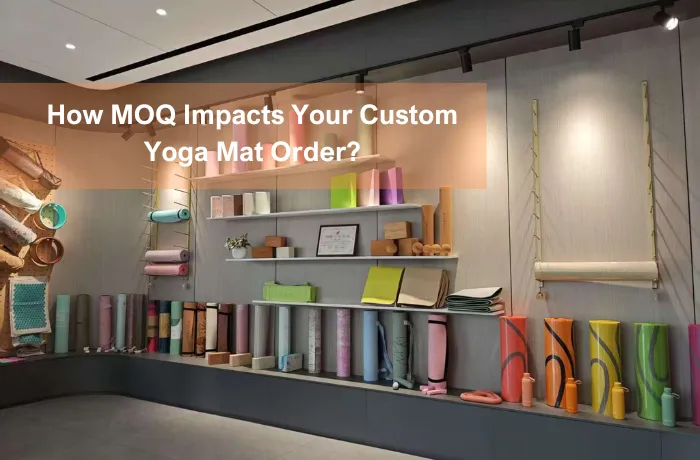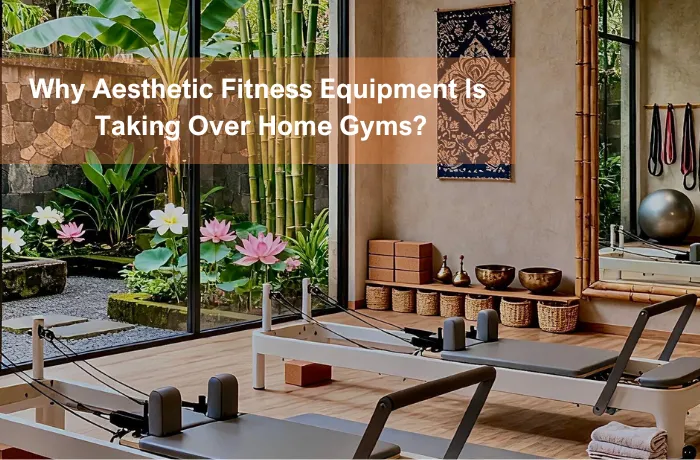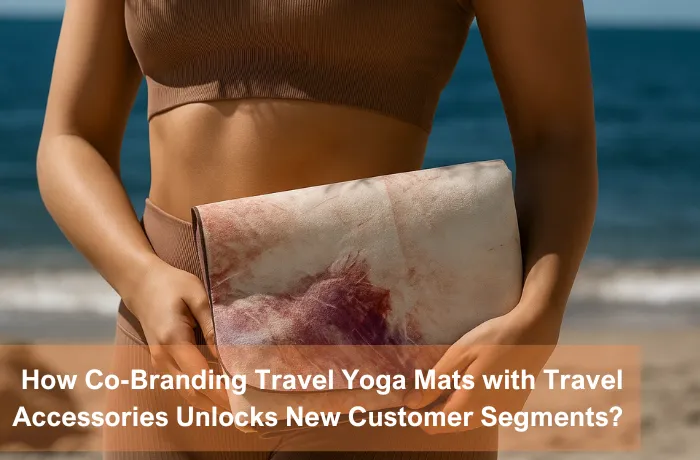
Key Features of Balance Pads Compared
Explore the differences between rectangle and oval balance pads.
| Features | rectangle balance pad | oval balance pad |
|---|---|---|
| Shape | Flat and rectangular for stability. | Curved to fit body contours. |
| Surface Area | Larger area for full-body exercises. | Smaller area for targeted movements. |
| Portability | Bulkier, needs more storage space. | Compact and easy to carry. |
| Best For | General fitness and balance training. | Recovery and focused muscle exercises. |
| User Level | Ideal for beginners and all levels. | Better for advanced users. |
| Material Durability | Firm foam for long-lasting use. | Softer foam, less durable. |
| Exercise Variety | Supports diverse workout types. | Focuses on specific movements. |
| Joint Support | Good for overall stability. | Gentle support for healing. |
When you want to improve balance, the right balance pad helps. Rectangle balance pads have more space, great for workouts and balance. Oval balance pads match your body’s shape and give better support. They are good for recovery or therapy exercises. Whether you want to get fitter or heal, pick what feels right for your body and goals.
Key Takeaways
- Rectangle pads have more space, great for beginners and basic exercises.
- Oval pads give focused support, good for recovery and light workouts.
- Both pads help with balance, but rectangle pads suit active workouts. Oval pads target certain muscles.
- Think about your goals: rectangle pads for fitness and strength, oval pads for healing and specific moves.
- Oval pads are smaller and easy to carry, perfect for travel or outdoor use.
Rectangle Balance Pads

Design and Features
Rectangle balance pads are made to be very useful. Their shape makes a wobbly surface that tests your balance. This is great for simple or hard exercises.
Here’s why they are special:
- The flat shape is big enough for both feet. It works well for standing exercises.
- The soft but strong material cushions your joints and lasts long.
- These pads work for everyone—beginners, athletes, or people healing from injuries.
This design lets you use the pad for many things like therapy, recovery, or fitness.
Benefits of Rectangle Balance Pads
A rectangle balance pad can make your workouts better. It helps with balance, coordination, and knowing your body’s position. Studies show balance tools like these improve proprioception, which helps prevent injuries.
Here’s a quick comparison to explain:
| Device Name | Type | Description | Outcome |
|---|---|---|---|
| Equistasi | Wearable Proprioceptive Stabilizer | Rectangular plate emitting mechanical vibrations | Improved balance training outcomes |
Rectangle pads also help build core strength. Using your core muscles during balance moves improves posture and stability.
Best Exercises for Rectangle Balance Pads
You can try many exercises with a rectangle balance pad. Here are some good ones:
- Single-Leg Stands: Stand on one leg on the pad. This helps your ankles and balance.
- Plank Variations: Put your hands or feet on the pad during planks. This works your core harder.
- Squats: Do squats on the pad to test balance and use stabilizing muscles.
Research shows these exercises work well. For example:
| Study Description | Findings |
|---|---|
| Energy expenditure comparison | Energy use was 14.2% higher with a balance board than sitting. |
| Ankle stability training | Balance boards strengthen muscles and ligaments for better ankle support. |
Adding these exercises to your routine improves balance and strengthens muscles.
Oval Balance Pads

Design and Features
Oval balance pads are made to keep you comfortable. Their rounded shape fits well under your feet, feeling natural. This shape helps target areas like ankles or knees during workouts. They are small, so you can carry and store them easily. Use them at home, the gym, or outside.
The material is soft but strong, giving slight wobble for balance practice. It also protects your joints, which is great if you’re healing from an injury. Whether sitting, standing, or kneeling, the oval shape supports focused movements.
Benefits of Oval Balance Pads
Oval pads are great for recovery or light exercises. They improve balance and coordination while being gentle on joints. The curved design helps you control movements better, perfect for healing exercises.
Using an oval pad boosts proprioception, which helps your body sense its position. This skill prevents injuries and improves how you move. The smaller size lets you work on specific muscles, making workouts more focused.
Comparing Rectangle and Oval Balance Pads
Stability and Support
Rectangle and oval balance pads both help with stability and support. Rectangle pads have a bigger surface, giving more room to move. You can stand, sit, or lie down on them easily. They work well for exercises like planks or squats. These pads make you feel steady while improving your balance and core strength.
Oval pads are shaped to match your body’s curves. Their design supports smaller areas like ankles or knees. If you’re healing from an injury, the oval pad gently supports your joints. It also adds a slight wobble to help you build stability.
Tip: Beginners should try rectangle pads for their wide support. Oval pads are better for focused recovery exercises.
Versatility for Workouts
Rectangle pads are great for many types of workouts. Their flat, large surface works for standing, sitting, or dynamic moves like lunges. You can even use them for partner exercises since they fit two feet or hands.
Oval pads are smaller but very precise. They’re perfect for exercises targeting specific muscles or joints. For example, use an oval pad under one foot during a single-leg stand to improve balance. They’re also comfy for seated or kneeling exercises because of their curved shape.
| Feature | Rectangle Balance Pad | Oval Balance Pad |
|---|---|---|
| Surface Area | Bigger, fits full-body exercises | Smaller, focuses on certain areas |
| Exercise Variety | Works for many workouts | Targets specific movements |
| Best For | General fitness and balance training | Recovery and focused muscle exercises |
Portability and Storage
Oval pads are small and easy to carry. They fit in gym bags or small spaces at home. Their lightweight design makes them great for travel or outdoor workouts.
Rectangle pads are bigger but still portable. Many are made from light foam, so they’re easy to move. However, they need more storage space, which might be tricky if you don’t have much room.
Note: Think about where you’ll use your pad and how often you’ll move it.
Suitability for Beginners vs. Advanced Users
Picking the right balance pad depends on your skill level. Beginners and advanced users need different features, and rectangle and oval pads suit them in unique ways.
For Beginners
If you’re new to balance pads, rectangle ones are a great choice. They have a bigger surface, giving you more space to move. This makes it easier to stay steady during exercises. You can stand, sit, or lie down without worrying about falling. These pads are perfect for simple moves like squats or planks.
Rectangle pads help you feel more confident. Their flat design stays stable under your feet. This lets you focus on learning the right way to do exercises. You’ll get better at balancing and moving without feeling nervous.
Tip: Try easy moves like standing on one leg or gently rocking. These exercises are simple and help you get used to the pad.
For Advanced Users
Oval balance pads are great if you want a harder workout. Their smaller size and curved shape make exercises tougher. You’ll need to use your stabilizing muscles to keep your balance, which builds strength and control.
Advanced users can use oval pads for specific exercises. For example, put the pad under one foot for lunges or under your hands for push-ups. These moves challenge your balance and improve body awareness.
Oval pads are also helpful for recovery. If you’re healing from an injury, their shape supports careful movements. You can work on certain muscles while keeping your joints safe.
| Experience Level | Rectangle Balance Pad | Oval Balance Pad |
|---|---|---|
| Beginners | Large surface for easy balance | Might be too hard to use |
| Advanced Users | Good for general exercises | Best for focused and tough workouts |
Note: Beginners should use rectangle pads to feel secure. Advanced users can try oval pads for more challenging exercises.
Choosing the Right Balance Pad
Fitness Goals and Needs
Your fitness goals help decide the best balance pad. Do you want better stability, stronger core muscles, or injury recovery? Each pad has special benefits for different needs.
- For General Fitness: Want to improve balance and do full-body moves? A rectangle pad is a great choice. Its bigger surface works well for planks, squats, and more.
- For Rehabilitation: Oval pads are perfect for healing. Their curved shape gently supports areas like ankles or knees. This makes them great for therapy or light exercises.
- For Core Strength: Both pads help, but rectangle pads are better for active core workouts like side planks or mountain climbers.
Tip: Think about your goals. If unsure, start with a rectangle pad. It’s versatile and easy to use.
Workout Style and Preferences
Your workout style also matters when picking a pad. Do you like fast-paced exercises or slow, focused ones? The right pad can match your routine.
- Dynamic Workouts: Rectangle pads are great for quick exercises. They’re stable but challenging, perfect for lunges, push-ups, or partner drills.
- Focused Movements: Prefer slow, controlled moves? Oval pads are better. Their smaller size targets specific muscles, ideal for yoga or Pilates.
- Portability: Need a pad you can carry easily? Oval pads are smaller and fit in bags. Rectangle pads are light but need more space.
Note: Match your pad to your workout style. Rectangle pads are versatile, while oval pads focus on precision.
Experience Level
Your skill level can also guide your choice. Whether you’re new or experienced, there’s a pad for you.
- Beginners: Rectangle pads are easier for beginners. Their large surface helps you feel steady while learning. Start with simple moves like standing on one leg.
- Advanced Users: Oval pads are more challenging. Their smaller size makes you work harder to balance. Try single-leg lunges or push-ups for a tougher workout.
| Experience Level | Rectangle Pad Benefits | Oval Pad Benefits |
|---|---|---|
| Beginners | Big surface for easy balancing | Might feel too hard at first |
| Advanced Users | Great for active exercises | Best for focused, tough moves |
Pro Tip: Beginners should use rectangle pads to build confidence. Once ready, try oval pads for harder exercises.
Additional Considerations (e.g., budget, material, durability)
When picking between rectangle and oval balance pads, think beyond exercises. Things like cost, material, and how long they last are important. Let’s look at these factors to help you decide.
Budget
How much you can spend matters when choosing a balance pad. Both rectangle and oval pads come in different price ranges, depending on their size, brand, and features.
- Rectangle Balance Pads: These usually cost more because they are bigger and more versatile. If you want a pad for many exercises, the higher price might be worth it.
- Oval Balance Pads: These are often cheaper. Their smaller size and simple design make them a good choice if you’re on a budget or need them for light exercises.
Tip: If money is tight, start with an oval pad. It’s a low-cost way to improve balance.
Material
The material of a balance pad affects how comfortable and durable it is. Most pads are made from foam, but there are differences.
- Rectangle Pads: These are made with firm, non-slip foam. This makes them stable and long-lasting, even for tough workouts.
- Oval Pads: These use softer foam, which feels nice and supports your joints. However, the softer material may wear out faster if used a lot.
| Feature | Rectangle Balance Pad | Oval Balance Pad |
|---|---|---|
| Foam Density | Firm foam for stability | Softer foam for comfort |
| Best For | Hard workouts and frequent use | Gentle exercises and recovery |
Note: If you need something that lasts longer, pick a rectangle pad. Its firm foam can handle more use.
Durability
How long a pad lasts is important, especially if you’ll use it often. You don’t want to replace it too soon.
- Rectangle Pads: These are very durable. They’re built for heavy use and tough exercises.
- Oval Pads: These are also durable but better for light use. Their smaller size and softer foam may not hold up as well under heavy pressure.
Pro Tip: If you plan to use your pad a lot or share it, go for a rectangle pad. It’s made to last longer.
Final Thoughts
Both rectangle and oval pads have their pros and cons when it comes to cost, material, and durability. Rectangle pads cost more but are stronger and more versatile. Oval pads are cheaper and great for gentle exercises. Think about how often you’ll use the pad and what you need it for. This will help you pick the right one that lasts a long time.
Picking the right balance pad can really improve your workouts. Rectangle pads are useful for many exercises and general fitness. They help you get better at balancing and strengthen your core. Oval pads, however, are shaped to support your body comfortably. This makes them great for recovery or specific exercises.
Consider your fitness goals and what works best for you. Whether you want to get stronger or heal from an injury, there’s a pad for you. Choose one that keeps you excited and makes exercising fun!
FAQ
1. Which balance pad is better for beginners?
Beginners should use rectangle pads. They have a bigger surface, which makes balancing easier. This helps you feel steady while learning basic moves. Oval pads are harder to use and better for advanced users or recovery.
Tip: Start with a rectangle pad to gain confidence before trying an oval one.
2. Can I use a balance pad for rehabilitation?
Yes, both pads can help with recovery. Oval pads are great for focusing on areas like knees or ankles. Their shape supports gentle movements. Rectangle pads work too but are better for full-body exercises.
Note: Ask your physical therapist which pad is best for your recovery.
3. Are balance pads portable?
Oval pads are easier to carry because they’re smaller. They fit in bags and are lightweight. Rectangle pads are bigger but still easy to move. If you travel a lot, an oval pad might be the better choice.
| Feature | Rectangle Pad | Oval Pad |
|---|---|---|
| Portability | Okay | Excellent |
4. What’s the best material for a balance pad?
Most pads are made of foam. Rectangle pads usually have firmer foam, which lasts longer and feels stable. Oval pads use softer foam, which is more comfortable for recovery. Pick based on your needs—durability or joint comfort.
Pro Tip: Check how firm the foam is before buying to match your workouts.
5. Can I use balance pads for yoga or Pilates?
Yes! Both pads can improve yoga and Pilates. Rectangle pads give a steady base for poses like planks. Oval pads are good for moves like balancing on one foot or seated stretches.
Tip: Use a balance pad to make your favorite poses more challenging.

